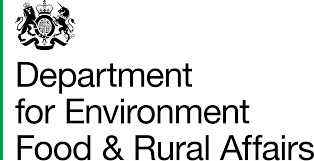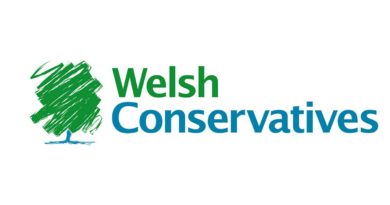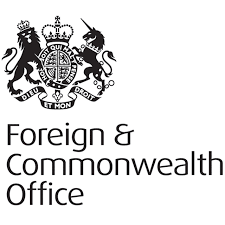PRESS RELEASE : 92% of English bathing waters meet water quality standards [November 2024]
The press release issued by the Department for Environment, Food and Rural Affairs on 26 November 2024.
Further action is needed to improve bathing water quality.
92% of bathing waters in England have met minimum water quality standards, with 85% of bathing waters being rated as ‘good’ or ‘excellent’, new annual figures released today show.
The 2024 statistics on English coastal and inland bathing waters follow testing by the Environment Agency at 450 sites regularly used by swimmers throughout the summer, including 27 new sites designated earlier this year. These tests monitor for sources of pollution known to be a risk to bathers’ health, specifically E. coli and intestinal enterococci.
Despite significant improvement since the 1990s, when just 28% were rated as ‘good’ or ‘excellent’, today’s results make clear that more still needs to be done to improve their quality for people and the environment.
The proportion of ‘good’ and ‘excellent’-rated sites has fallen slightly, in part due to the existing water quality of the 27 new bathing water sites designated this year, 18 of which are classified as ‘poor’. This is not unexpected, as the new sites have not been managed for bathing before, and it takes time to understand and tackle the sources of pollution affecting them.
Without the newly designated bathing waters, 95% of sites would meet minimum standards this year, only slightly down from 96% last year.
Environment Agency Chair Alan Lovell said:
Bathing waters are hugely important for communities and for the environment – and we know there is growing public demand for bathing sites across the country, including at our lakes and rivers.
While overall bathing water quality has improved in recent decades due to targeted investment and robust regulation, today’s results show there is much work still to do, particularly to bring our inland bathing waters up to standard.
We are working with the water industry, farmers and local authorities and are investing in our regulation, with more people on the ground, updated digital assets and new legal powers to improve our bathing waters for all.
The figures also show a notable difference between the quality of coastal and inland bathing waters, with 95% of coastal waters meeting minimum standards this year, compared to only 53% of inland sites. Rivers often have poorer bathing water quality compared to the sea which benefits from the natural disinfection of salt water and greater dispersal of pollutants.
The results follow the launch on 12 November of a Government consultation on proposed reforms to bathing water regulations to ensure a more flexible approach to designation and monitoring. This includes assessing water quality and the feasibility of improvement at a site prior to designation.
Water Minister Emma Hardy said:
These figures are unacceptable and show that too many of our popular swimming spots are polluted.
That’s why we are placing water companies under special measures through the Water Bill, which will strengthen regulation including new powers to ban the payment of bonuses for polluting water bosses and bring criminal charges against persistent law breakers.
This is just the start – we’ve launched the largest review of the water sector since privatisation to attract the investment we need and reform the water system to help clean up our rivers, lakes and seas for good.
Following today’s results, the Environment Agency is working with local partners to take targeted action to improve water quality at all bathing water classified as ‘Poor’.
Wider measures to improve water quality include:
- Driving up monitoring of water companies with new flow monitors installed on more than 2,000 wastewater treatment works and 100% of storm overflows now monitored. We are increasing water company inspections to 4,000 by the end of March 2025; 10,000 in 2025/6 and 11,500 in 2026/27. This will increase our inspection and audit work substantially to uncover non-compliance. We are also carrying out our largest ever criminal investigation into potential widespread non-compliance by water companies. Since 2015, we have concluded 63 prosecutions against water and sewerage companies securing fines of over £151 million.
- Supporting farmers to reduce water pollution and an increase in agricultural regulation, including doubling funding for free face-to-face support on reducing water pollution to all farmers in England. The Environment Agency carried out more than 4,800 farm inspections across England last year, helping farmers comply with legal requirements and resulting in more than 7,000 actions undertaken to improve farm practices and drive improvements to our environment.
The Environment Agency is changing its approach to regulation of the water industry by:
- Investing around £15 million in enhancing our digital systems and tools. Data and information from lots of sources will be combined to turn data rapidly into regulatory intelligence to easily identify and tackle the highest priority issues.
- Investing in 500 additional staff including environment officers, data analysts, enforcement specialists and technical experts, as well as team leaders and managers.
- Continuing to prioritise attendance at all Category 1 and 2 serious and significant water company pollution incidents but also increasing our attendance at Category 3 (minor) water company pollution incidents.
- Being more open and transparent about the way we regulate the industry. To help people get the information they need we recently launched our new Water Hub. This will hold all our data and guidance on water in one place for the public to easily access.
Notes to editors:
- Last year’s statistics showed that 96% of bathing water sites met the minimum standard of Sufficient, while 90% met the highest standards of Good and Excellent.
- 450 bathing waters in England were sampled this year and have been classified as either Excellent, Good, Sufficient or Poor. These classifications and information about water quality will be displayed at each bathing water and on bathing water profiles available to access on the Environment Agency’s Swimfo website.
- The bathing water season runs from May to September every year. The Environment Agency took 7,420 samples during the 2024 bathing season. The Environment Agency takes up to 20 water samples at each of England’s designated bathing waters during the season.
- The sampling programme is set ahead of the start of season to avoid bias and follows a strict protocol to ensure samples are taken consistently in terms of depth of water, location where most bathers are expected and also covering a range of tidal states where safe to sample.
- Other factors which influence bathing water quality can include tides, and physical or environmental changes at a site, with every catchment affected differently.
- Our standards for bathing waters come from guidelines produced by the World Health Organisation (WHO) and are science based. They have been adopted by many countries through the EU Bathing Water Directive, which England’s Bathing Water Regulations are based on.



